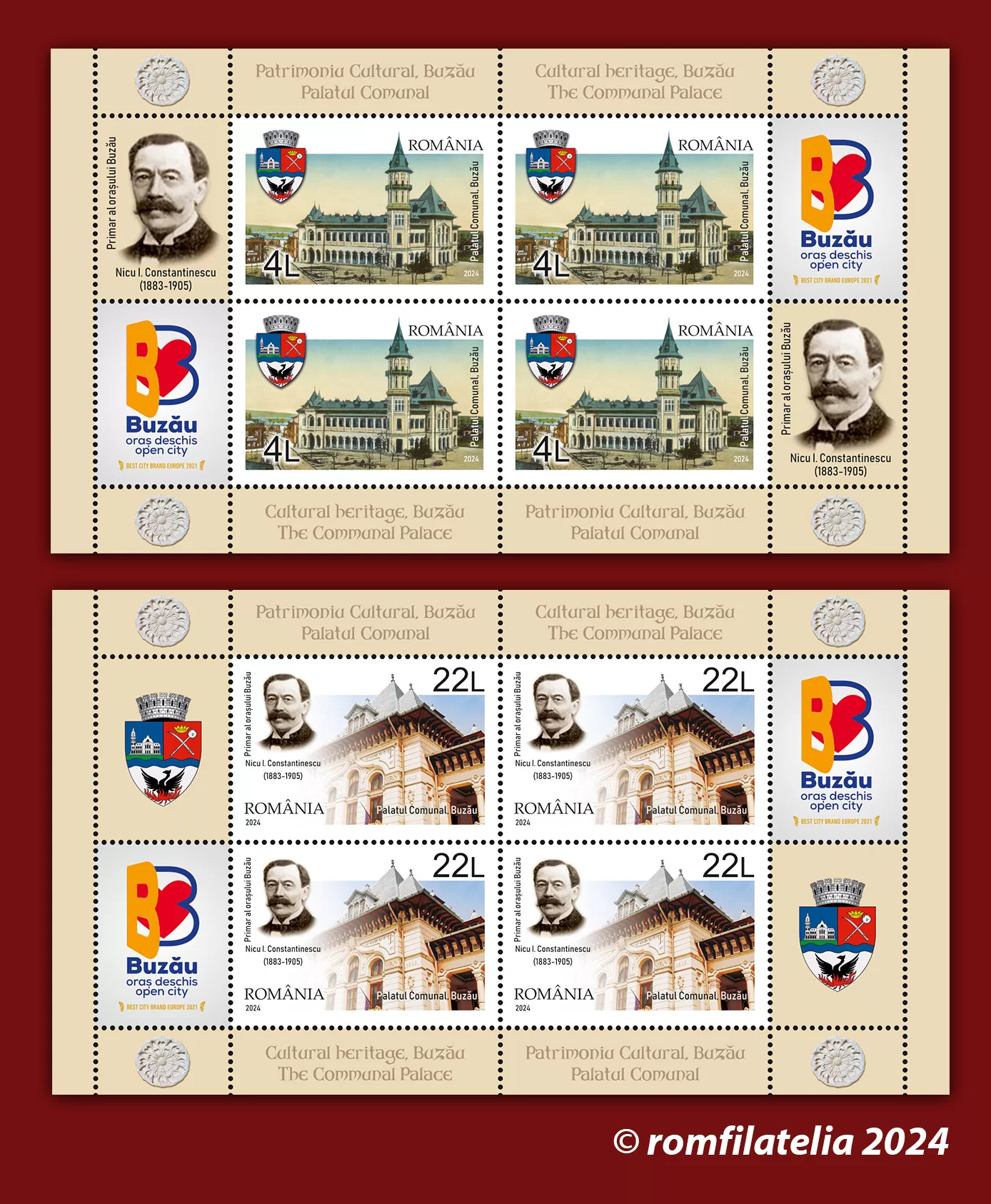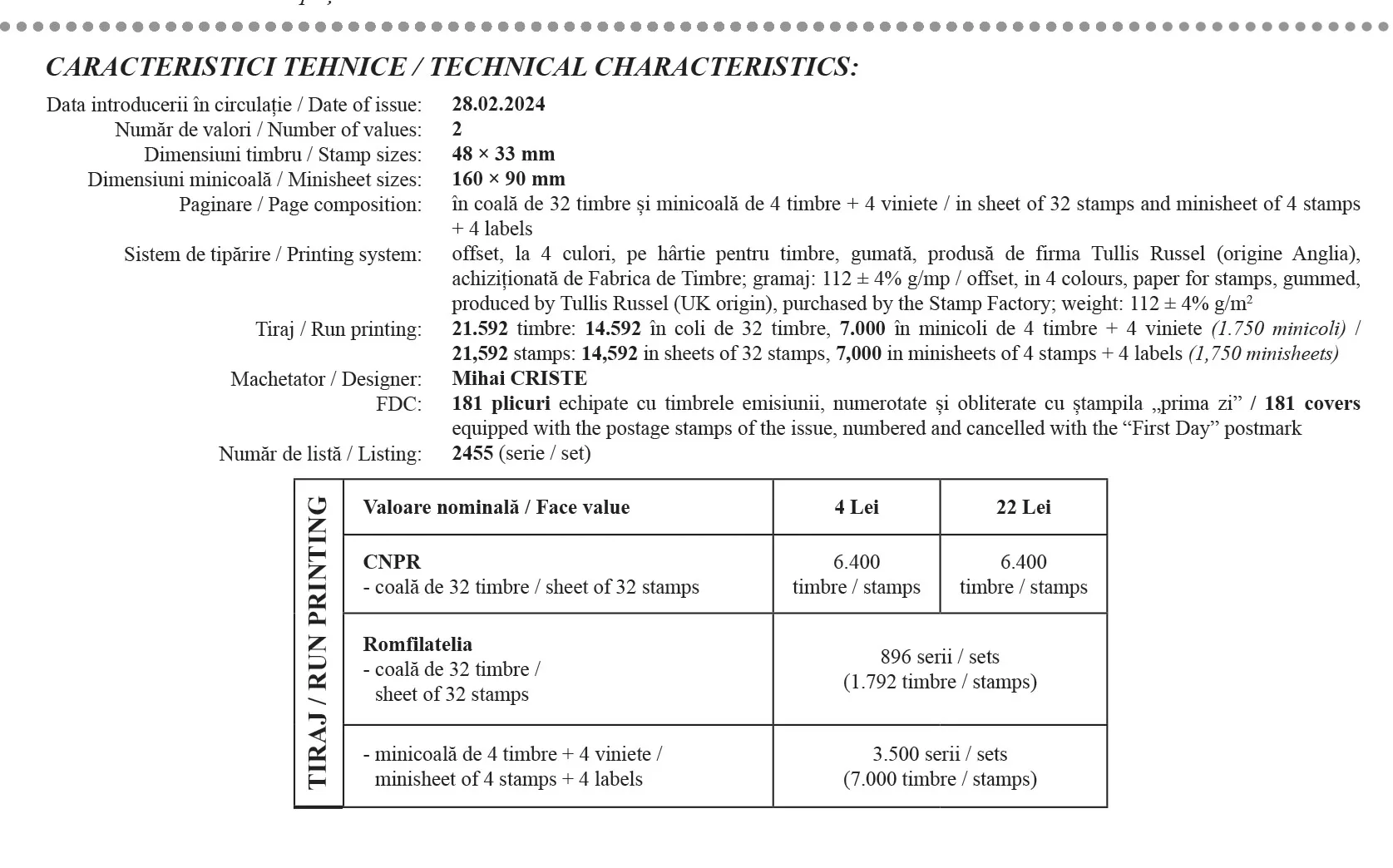 Romfilatelia introduces into circulation on Wednesday, February 28, this year, the issue of postage stamps Cultural Heritage, Buzău, The Communal Palace, consisting of 2 stamps and 1 First Day Cover, which marks the 120th anniversary of the construction’s completion of this emblematic Romanian edifice.
Romfilatelia introduces into circulation on Wednesday, February 28, this year, the issue of postage stamps Cultural Heritage, Buzău, The Communal Palace, consisting of 2 stamps and 1 First Day Cover, which marks the 120th anniversary of the construction’s completion of this emblematic Romanian edifice.
The written history of the city of Buzău begins with that of Wallachia, its status as a borough and customs point being certified by a document from the time of voivode Dan II. The Buzău River, from which it took its name, appears in a document dating back to 376, under the name of Mousaios.
In the Middle Ages there was also a fortress of Buzău mentioned in some foreign texts. Its borough status is attested in 1431. It then became an Orthodox episcopal seat in 1525.
Over the course of three centuries (16th-19th), invasions and disasters led to the destruction and depopulation of the borough-town. Strongly connected to their place of origin, the locals have rebuilt it every time.
The 19th century inaugurated a period of economic and cultural flourishing of Buzău, which also included the construction of the Communal Palace, which has become the symbol building of the city. Built between 1899 and 1903, it represented the most imposing communal construction in the Kingdom of Romania, during the reign of King Carol I.
The one who ordered the construction of the Communal Palace (City Hall headquarters) was the “modern founder of Buzău”, the liberal mayor Nicu I. Constantinescu. The architectural project was developed by one of the founders of the Bucharest School of Architecture, architect Alexandru Săvulescu.
Nicu I. Constantinescu, parliamentarian in several legislatures, was a member of the town’s Communal Council starting 1876, and from 1883 to 1905 he held the position of Mayor of Buzău.
The beautiful building of the Communal Palace presented in the image of the postage stamp with the face value of Lei 4, represents a reference creation in the field, combining Romanian elements with local architectural motifs (found in the manor houses), to which are added the decorative elements that refer to the vine (major presence on the Buzău plains).
Apart from this architectural monument of great value, the name of Nicu I. Constantinescu is closely related to the systematization of the town (especially the modernization of the streets) and the construction of several buildings for schools. A cultural edifice that inhabitants of Buzău are proud of is highlighted by the “Bogdan Petriceicu Hașdeu” National College building, erected in 1893.
After more than a century of existence of the Communal Palace, the busts belonging to Nicu I. Constantinescu in Nicolae Bălcescu Boulevard and respectively on the platform of the main staircase of the Communal Palace remind the inhabitants of Buzău of the place and role of this mayor in the history of their city. A street is named after him, and since 2016 the Festival Hall of the Communal Palace (Buzău City Hall) is known as the I. Constantinescu Hall.
The postage stamp with the face value of Lei 22 presents in its image the portrait of Nicu I. Constantinescu associated with an architectural detail of the Communal Palace, an object of great value of the cultural and architectural heritage of the City of Buzău.
The First Day Cover includes in its graphics the brand of the city of Buzău (Buzău, open city), which won in 2021,
in London, the gold medal in a competition in which
the main cities of Europe participated, including Paris
and London.
Romfilatelia thanks the representatives of the Buzau City Hall for the documentary support granted in the achievement of this postage stamps issue.



